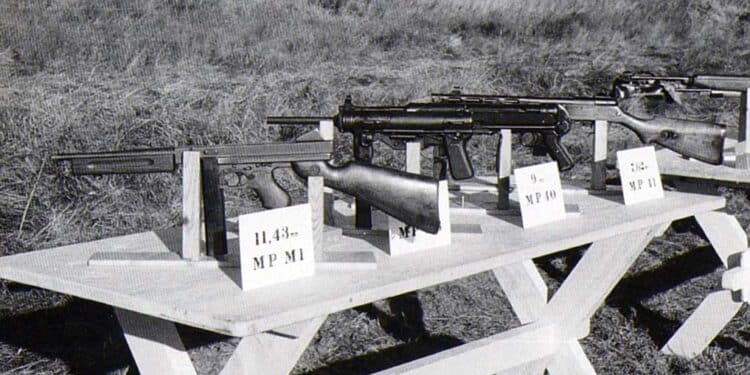By Michael Heidler
After World War II, thousands of M3 and M3A1 Grease Guns were scattered all over the world. Thanks to the simple design, the weapons could be kept operational by any reasonably talented craftsman. They performed their service on both sides of the law and were used by the paramilitary Irish Republican Army (IRA) as well as by official military forces like the Greek Expeditionary Force (GEF) and the Philippine Marine Corps. However, its use by the Austrian police is hardly known.
With the War against the German Reich, huge quantities of military equipment and weapons were shipped to the European mainland. After the victory, all this could not be brought back home. It would have been too complex and too expensive. On the other hand, public order had to be restored in the respective occupation zones. The occupiers did not do this alone, and more and more local police were called in and trained for this. The units often got equipment from foreign surplus stock.

In Austria there were large quantities of Russian and American weapons left after the War. The regular police were still armed with the old Mannlicher M1895 bolt-action carbine. To strengthen their power, the police later added the Russian submachine gun PPSh-41 to their arsenal to be used for many years.
Four years after World War II, the “B-Gendarmerie” (riot-control police) were founded in secret in the American sector of Austria. Even today it is still unclear what the letter “B” means. It could stand for “Bereit schafts-Gendarmerie” (task force) as well as “Bundes-Gendarmerie” (federal police). It is also speculated that the “B” could stand for “Besondere” (special). However, at the time the B-Gendarmerie was founded, Austria’s Allies did not yet officially grant Austria its own military organization, and the name B-Gendarmerie is to be understood as a camouflage designation in any case.
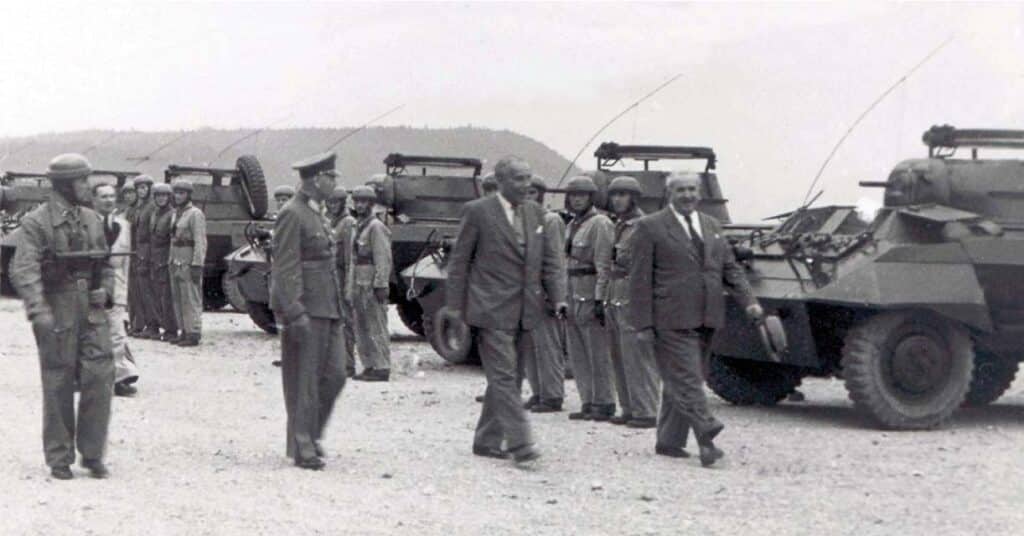
Minister of the Interior Oskar Helmer visits a mechanized platoon of the new Bundesheer. The soldier on the left carries an M3.
The western occupying powers, which provided substantial support for the entire project, were also in possession of secret recruitment lists and plans of the Austrians. The organization provided for the admission of former officers, and a list of battle-hardened soldiers was compiled without their knowledge in order to be able to quickly provide appropriate personnel in case of emergency. By 1954, some 90,000 men had been recorded in this way. There were also plans for taking the members of the B-Gendarmerie out of the country, especially to Italy or North Africa, in the event of a Communist coup. They would form the core of an Austrian Army in exile.
In 1950, the first standing units were formed: three battalions (named Gendarmerie schools) and one reconnaissance company were camouflaged as a driving unit. On August 1, 1952, former Wehrmacht officers took over the leadership of the B-Gendarmerie, and the units became officially known to the public. They were under the direct command of the Federal Ministry of the Interior (BMI). At the end of 1953, the B-Gendarmerie consisted of about 100 officers and 4,000 men.
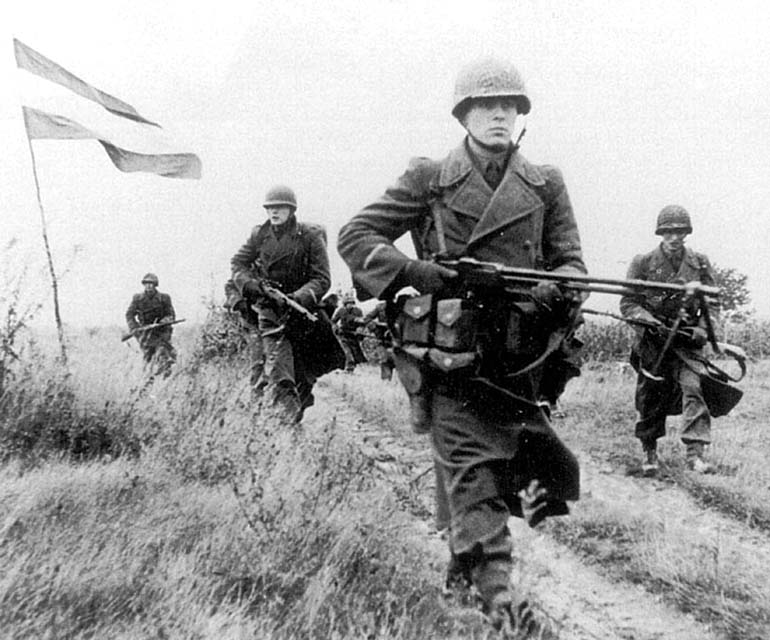
Unlike the regular police, the B-Gendarmerie received light infantry weapons from U.S. stock. The United States gave 24,500 M1 Carbines, 500 M2 Carbines, 25,000 M1 Garands, 1,837 self-loading 1911A1 pistols, 623 M3/M3A1 and 1,885 M1A1 Thompson submachine guns. The carbines and rifles came with a large number of bayonets and rifle grenade launchers.
After the conclusion of the State Treaty on May 15, 1955, the existence of this organization made it possible to build a new Army relatively quickly. The last deployment of the B-Gendarmerie as such took place the day after the signing of the treaty in the form of a Liberation Parade in the city of Linz.
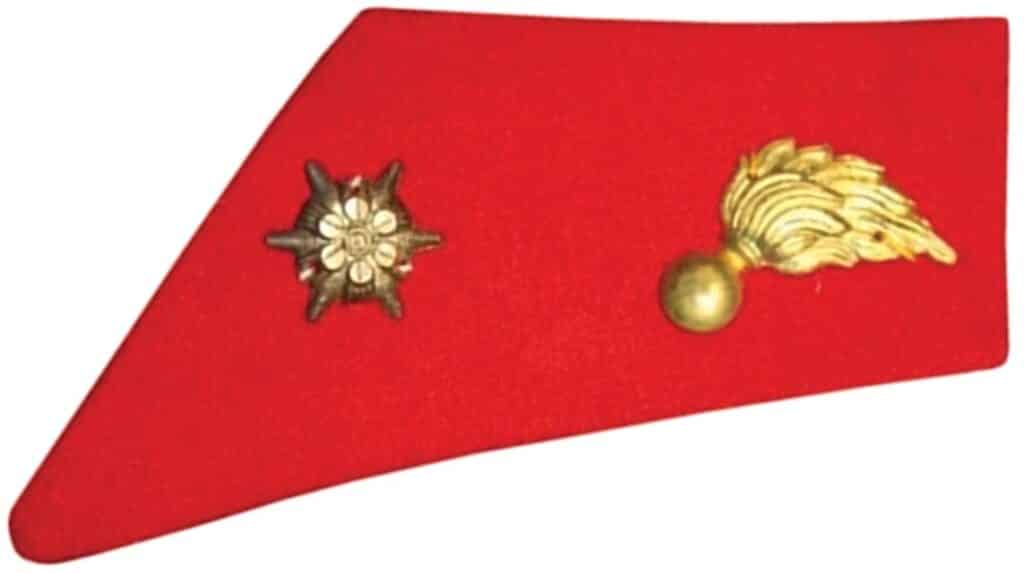
On July 8, 1955, the Allied ban on military activity fell, and the end of the B-Gendarmerie was set for July 27, 1955, when it was renamed the Provisional Border Guard Service. The new Austrian Federal Army (or Austrian Armed Forces), named Bundesheer, was founded on May 15, 1955. Its armament came from Allied depots. In 1956, 6,000 former B-Gendarmeries formed the cadre for the newly established Army, which had to pass its first test that same year in the course of the Hungarian uprising by securing the Austrian state border. The Army soldiers, who had already been members of the B-Gendarmerie, were allowed to wear the emblem of their former organization, a red angle with a burning grenade, on the right sleeve on their uniforms.
For consistent training and handling, instructions were issued by the BMI, like the ZI.96.363- 3/57 “Maschinenpistole Type M3 (M3 A1) Kaliber 11,43mm” on July 25, 1957. The American submachine guns remained in service for more than 10 years before they were gradually replaced from 1967 and on by the UZI.
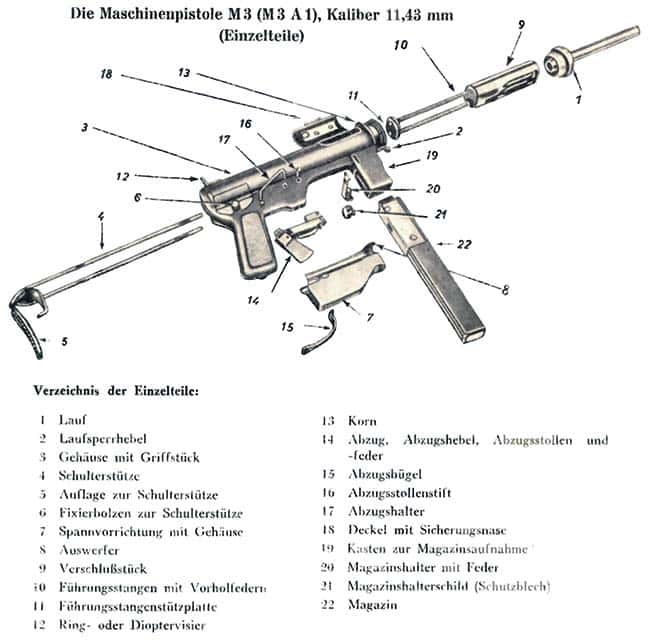
Illustration of the disassembled MP M3 from ZI.96.363-3/57.
| This article first appeared in Small Arms Review V24N7 (Aug/Sep 2020) |



